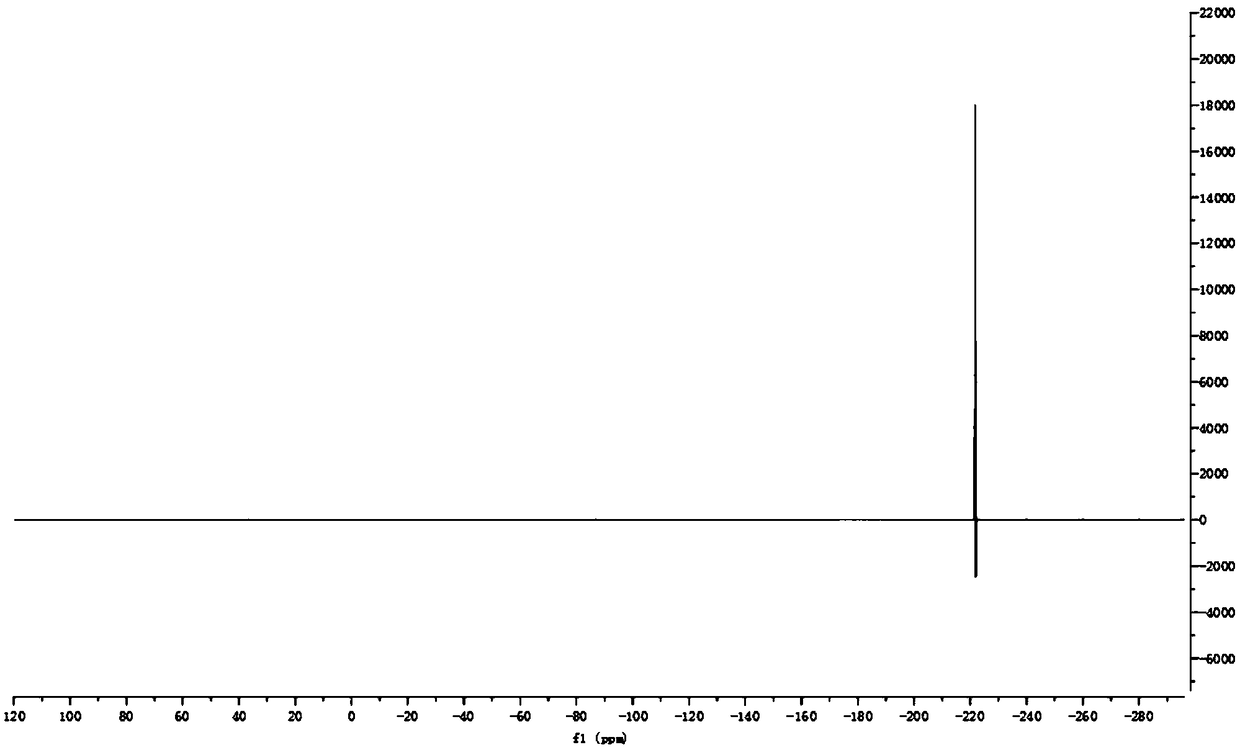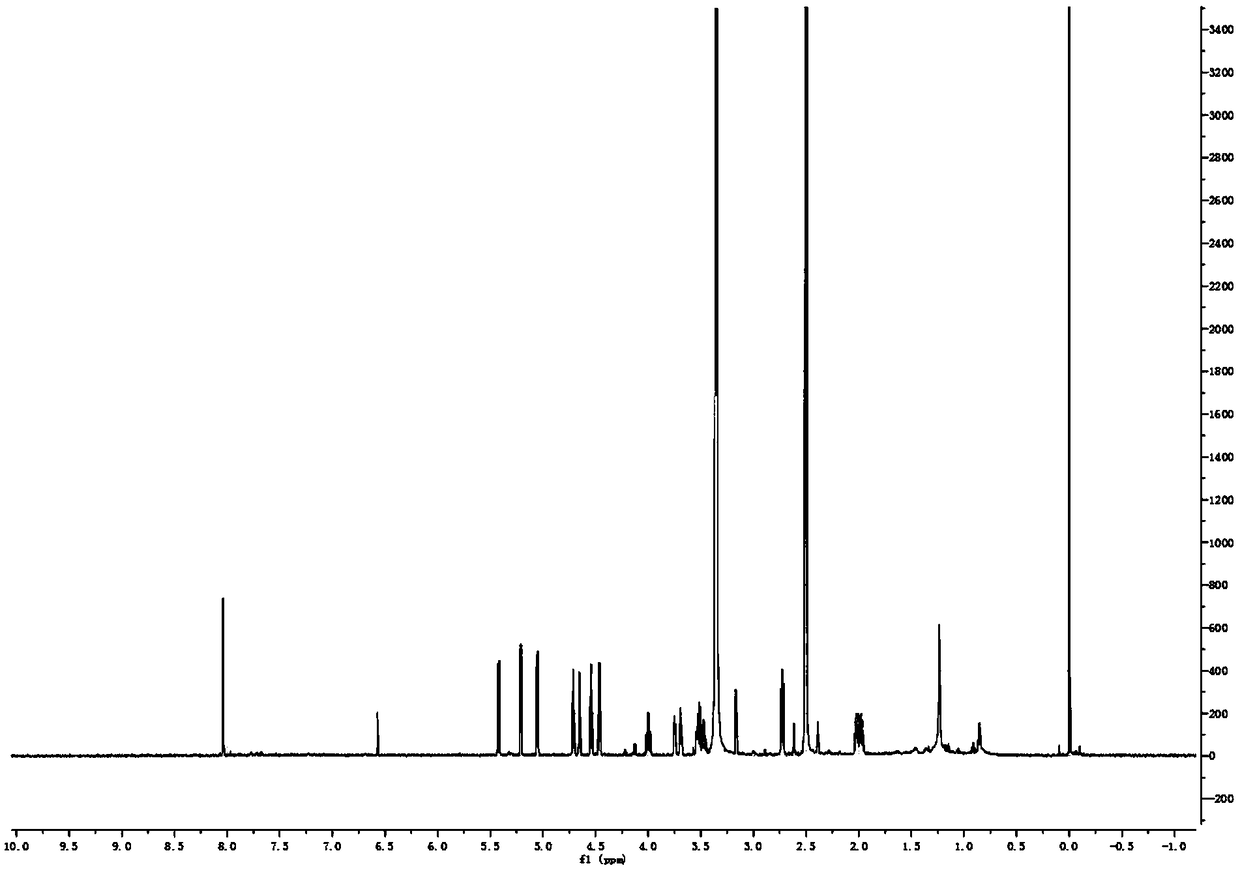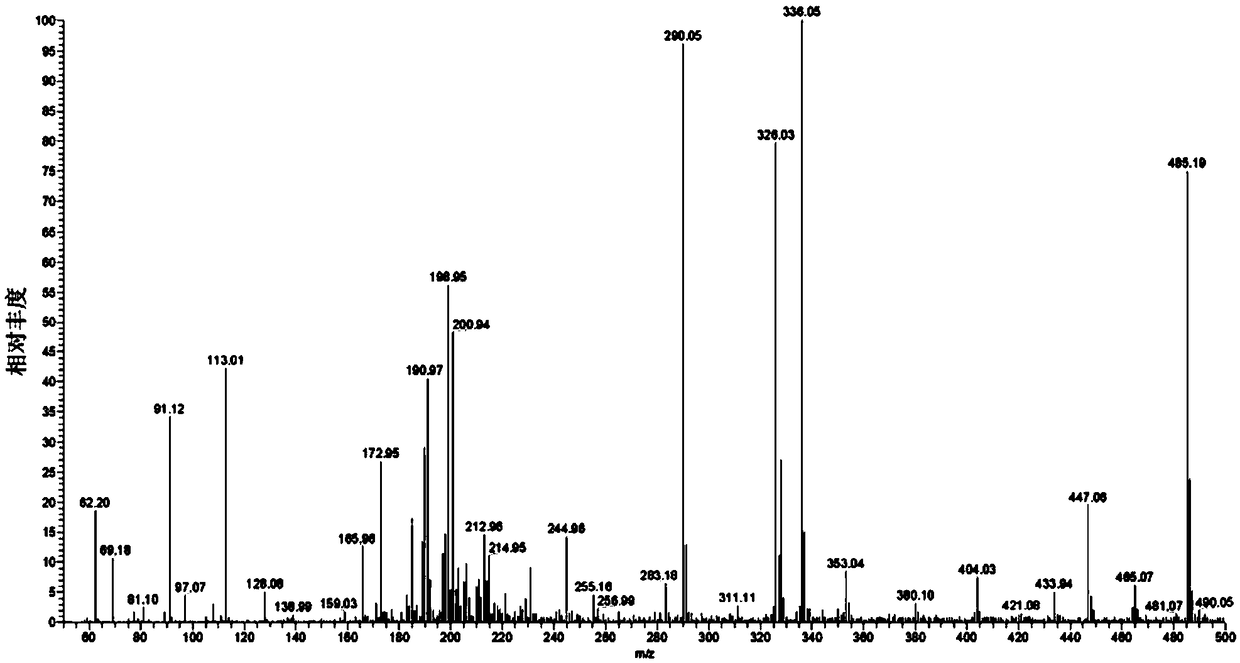ASGPR-targeted positive electron developer as well as preparation method and application thereof
A positron imaging agent and targeting technology, which is applied in the preparation of sugar derivatives, organic chemical methods, chemical instruments and methods, etc., can solve the problems of multimer synthesis difficulties, false positives, and affecting the diagnosis of abdominal diseases, and achieve Good imaging effect and strong affinity
- Summary
- Abstract
- Description
- Claims
- Application Information
AI Technical Summary
Problems solved by technology
Method used
Image
Examples
preparation example Construction
[0035] The preparation method of the above-mentioned positron imaging agent targeting ASGPR comprises the following steps:
[0036] 1) Disperse 4-pentyn-1-ol in a solvent, then add triethylamine, 4-dimethylaminopyridine and p-toluenesulfonyl chloride, fully react, extract the reaction solution, and then remove water from the extract , vacuum distillation and column chromatography to obtain
[0037] 2) Will dispersed in a solvent, and then added 18 F ions, fully reacted, get
[0038] 3) Will Disperse in the solvent, then add 4A molecular sieve, mix evenly, then add trimethylsilane azide and tin tetrachloride, fully react, remove 4A molecular sieve by suction filtration, then dewater the filtrate, vacuum distillation and column layer analyzed and separated to obtain
[0039] 4) Will Disperse in a solvent, then add sodium methoxide, fully react, adjust the pH value of the reaction solution to 6-7, filter and dry to obtain
[0040] 5) Will dispersed in a solven...
Embodiment 1
[0057] A preparation method of a positron imaging agent targeting ASGPR, comprising the following steps:
[0058] 1) Disperse 4-pentyn-1-ol (2.52g, 30mmol) in 80mL of dichloromethane, then add triethylamine (10.12g, 100mmol), 4-dimethylaminopyridine (0.16g, 1.32mmol) and p-toluenesulfonyl chloride (6.86g, 36mmol), reacted at room temperature for 14h, then extracted with ethyl acetate, and then subjected to anhydrous sodium sulfate dehydration, vacuum distillation and column chromatography to separate the extract to obtain a light yellow liquid Yield 39%; 1 H NMR (600MHz, CDCl 3 )δ7.80(d, J=8.3Hz, 2H), 7.35(d, J=8.1Hz, 2H), 4.15(t, J=6.1Hz, 2H), 2.44(d, J=13.4Hz, 3H) ,2.26(dt,J=6.9,2.6Hz,2H),1.86(m,2H),1.23(m,1H);
[0059] 2) Will (35.7mg, 0.15mmol) was dispersed in 1mL acetonitrile, then added 18 F ions (100mCi), reacted at 85°C for 10min to obtain Yield 40%;
[0060] 3) Will (3.9g, 10mmol) was dispersed in 20mL of ultra-dry dichloromethane, then an appropriate amo...
Embodiment 2
[0069] A preparation method of a positron imaging agent targeting ASGPR, comprising the following steps:
[0070] 1) Disperse 4-pentyn-1-ol (2.52g, 30mmol) in 80mL of dichloromethane, then add triethylamine (10.12g, 100mmol), 4-dimethylaminopyridine (0.16g, 1.32mmol) and p-toluenesulfonyl chloride (6.86g, 36mmol), reacted at room temperature for 12h, then extracted with ethyl acetate, and then subjected to anhydrous sodium sulfate dehydration, vacuum distillation and column chromatography to separate the extract to obtain a light yellow liquid Yield 36%;
[0071] 2) Will (35.7mg, 0.15mmol) was dispersed in 1mL acetonitrile, then added 18 F ions (100mCi), reacted at 85°C for 15min to obtain Yield 38%;
[0072] 3) Will (3.9g, 10mmol) was dispersed in 20mL of ultra-dry dichloromethane, then an appropriate amount of freshly evaporated 4A molecular sieves was added, stirred for 20min, then trimethylsilyl azide (1.38g, 12mmol) and tin tetrachloride ( 4.168g, 16mmol), stirr...
PUM
 Login to View More
Login to View More Abstract
Description
Claims
Application Information
 Login to View More
Login to View More - R&D
- Intellectual Property
- Life Sciences
- Materials
- Tech Scout
- Unparalleled Data Quality
- Higher Quality Content
- 60% Fewer Hallucinations
Browse by: Latest US Patents, China's latest patents, Technical Efficacy Thesaurus, Application Domain, Technology Topic, Popular Technical Reports.
© 2025 PatSnap. All rights reserved.Legal|Privacy policy|Modern Slavery Act Transparency Statement|Sitemap|About US| Contact US: help@patsnap.com



